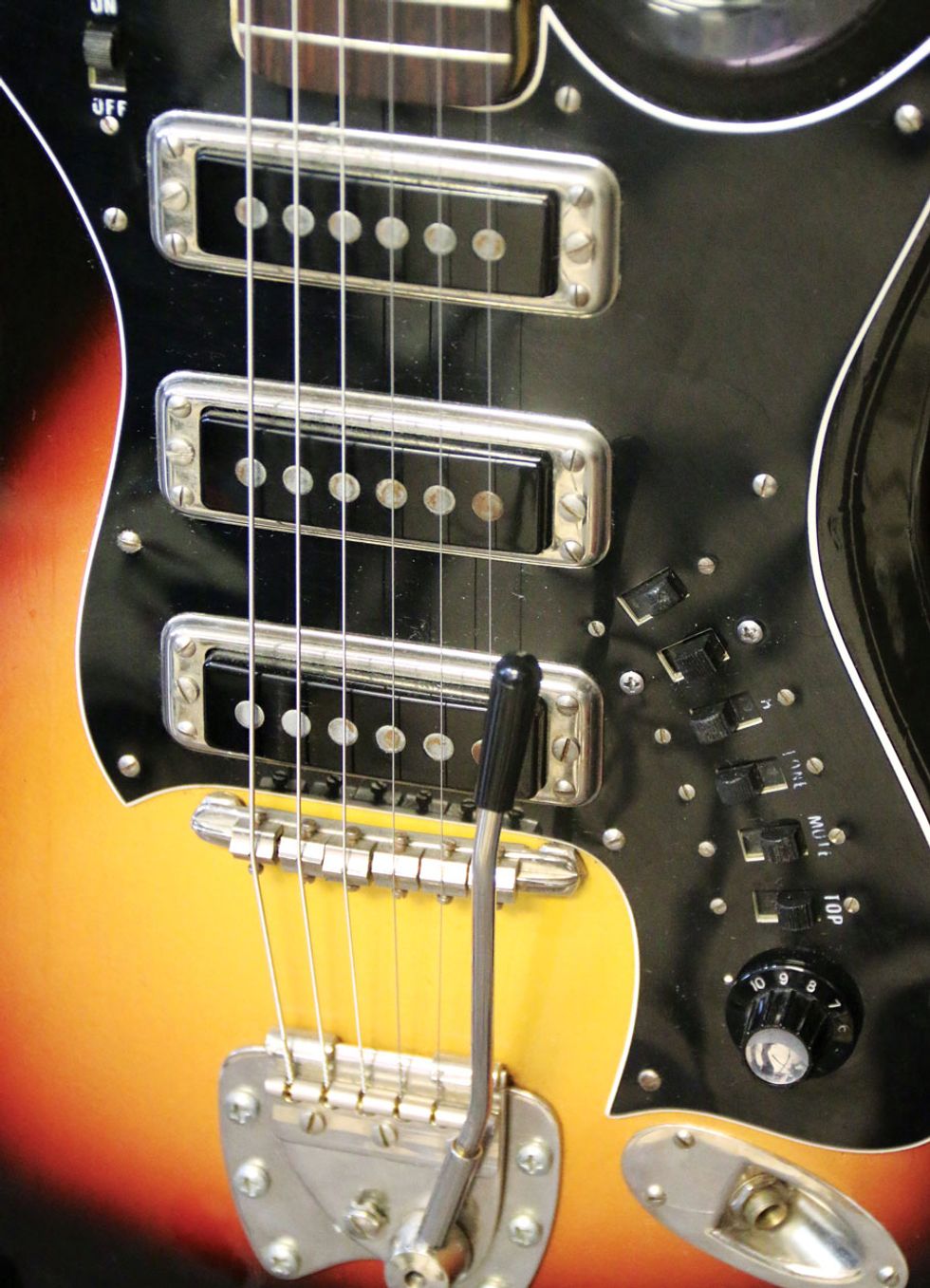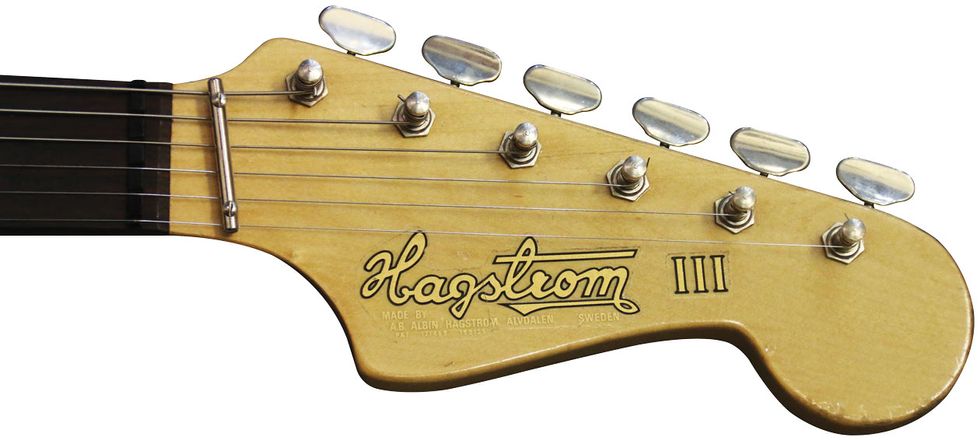Well, you gotta have that one guitar in your collection that’s a little—or a lot—left of center to get that sound standard-model 6-strings won’t give you. Right? You can always count on getting classic tones from your Tele, Strat, Les Paul, SG, or whatever in the solidbody category, but you also need that oddball to give your palette something different. Or at least I do. So the minute this beautiful 1967 Hagström F-300, which was sold in Europe under the Hagström III name, came into the shop, I started to jones for it.
There’s a cool backstory to this model. In 1963, Ben Davis, the owner of the London-based Selmer company, which distributed Hagströms in the U.K., wanted an update on the company’s Futurama model to stimulate sales. The result was the offset-bodied Futurama Coronado Automatic, which looked something like a Fender Jazzmaster. Only 200 were built, but they seemed to trigger a new-guitar wave at Hagström: Along came the Automatic, the two-pickup Hagström II, and, then, our F-300. As you might guess—or cheat by looking at the photos—the F-300 was a three-pickup model with a clear debt to the Fender Stratocaster, including a whammy bar … typically of questionable usefulness.
Here’s a look at the external controls for this guitar’s electronics. There’s an overall on/off—an effective killswitch—on the upper bout, and six switches and a master volume in the guitar’s belly, just above the input jack.
The Hagström F-300 started shipping in 1965. The bulk of this model’s production was from its inauguration to 1967, although records indicate that limited manufacturing and shipping continued until at least 1972. The example we’re eyeballing has a tobacco sunburst finish and arrived at the shop with the original chipboard case, with a tiger-print plush lining that really made the guitar pop when we first opened the case. The gent who owned the guitar was its original owner, and he looked the part, strolling into the store with blue-black dyed hair and an early ’70s Stones/Faces rooster cut, wearing straight-legged jeans and Beatle boots. So this F-300 is kind of like a dog that resembles its owner. Both have a similar rock ’n’ roll swagger—although with its biting single-coil pickups, fans of Hound Dog Taylor’s raw blues would also be happy hugging this Hagström.
This guitar sports the key Hagström appointments of its era, and a little more. There’s the company’s H-Expander truss rod, which allows for comfortably low action. The birch body has a 3-bolt neck joint, and that neck’s got a comfortable rosewood fretboard with dot inlays. Although the headstock screams “Fender,” the body’s pointy double wings acknowledge the design of the Hagström II and, of course, the Gibson SG. And then things get happily weird. The guitar has multiple switches, which affect the pickups, along its lower belly. There is a master volume dial with the six switches. The first three are on/off switches for each pickup, which allows for more combinations than the standard Fender-style 5-way switch. Despite that, they are labeled L, M, and H, for low, middle, and high. The next three are, respectively, a tone switch that rolls off highs, a mute switch that acts like a pad, and another tone button that performs like a high-pass filter. So finding the variety of tones this guitar can produce takes some practice to extract. Or maybe not: I didn’t notice much difference with these switches engaged or disengaged. Maybe more experimentation with blending different pickups and switch-button positions would yield more noticeable results? I dunno. According to the 1968 Hagström catalog, the original retail price for this guitar was $125. Today’s asking price for this guitar, which is in excellent condition, is $1,099.
Like the guitar’s body shape and pickup configuration, this headstock signifies the influence of Fender’s Stratocaster. Is there some irony in that patent number beneath the company’s logo?
Oh, and about those Hagström pickups. They’re known for a hot, punchy sound, with clear and snarling highs, and these live up to that reputation. A surprising bonus is that this particular vibrato arm does a decent job of staying in tune with subtle use. Inspired by artists who’ve played this model, including David Bowie, Andy Partridge of XTC, and even Neil Young, I’m still thinking about this one.










![Rig Rundown: Russian Circles’ Mike Sullivan [2025]](https://www.premierguitar.com/media-library/youtube.jpg?id=62303631&width=1245&height=700&quality=70&coordinates=0%2C0%2C0%2C0)


























